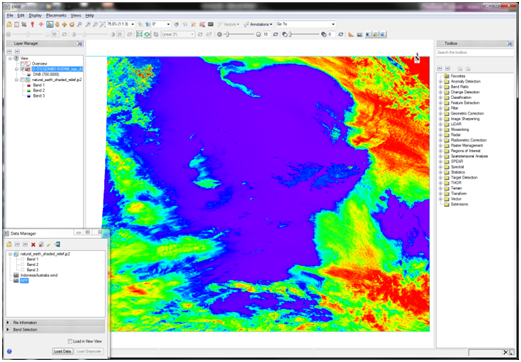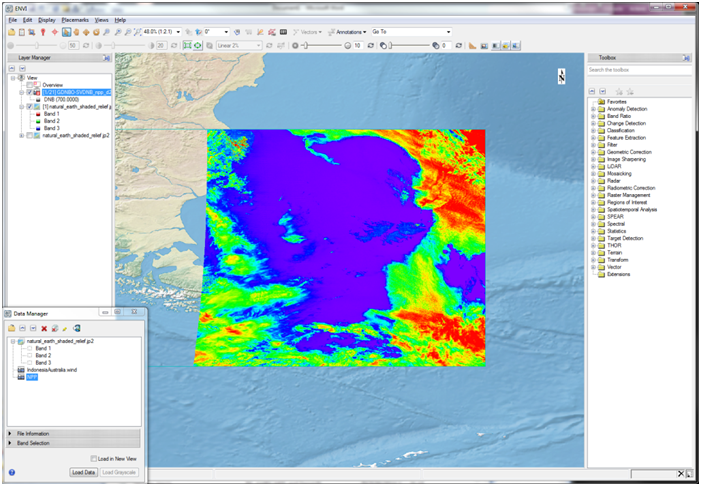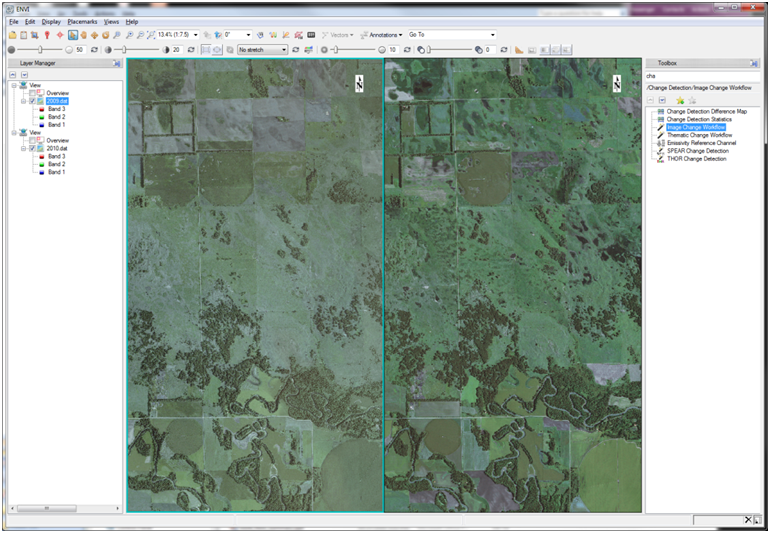In a Word: Change
Anonym
We hear it every day, change is coming. Faster, slower, or going in circles, it is the biggest constant in our world. I discovered a couple things that are already in ENVI, or coming soon, that makes understanding imagery and change much more palatable.
1) All the vector data and base imagery data available in 5.1
I opened up some cloudy NPP VIIRS data and was pretty flummoxed as to where in the world I found myself.

Hmmmm, where am I???
As of 5.1, I can now go to File->Open WorldData->Shaded Relief et viola! Having a map to show your basis of change is really helpful!

2) Time series tools, coming this fall!
ENVI will be time aware. It’s coming and it’s being tested right now, so I’m lucky enough to have a sneak peak. Past options included layer stacking or using IDL to extract temporal trends for analysis. The layer stack approach required you to have the same area and designate a pixel size for all data. It worked, but wasn’t terribly flexible for images of different spatial extents. There are many imaging systems now acquiring data daily, or even more frequently, and there is a need for more comprehensive change tools for these datasets. Check out this animation of wind data found in a GRIB file. Again, the world data gives me context, the multiple views allows me to visually compare winds from the north/south and east/west, and the time slider makes it easy to step through data, annotate and create a video.
3) Change detection tools
The change detection workflow that came out in ENVI 4.8 is still one of my favorite features. You can go cross-eyed trying to visually find vegetation changes like in these NAIP images from 2009 and 2010.

But with image differencing, you can quantify the changes, export to a shape file and quickly find areas that are of interest. In this case, I was looking for vegetation decrease, especially native prairie vegetation. A change in prairie vegetation can be a new claim or it can be illegal activities such as misuse of subsidies. Using change detection, I’m able to quickly highlight decreases in vegetation from 2009 to 2010—ENVI computes an NDVI if there is a Near-Infrared band and then performs the change detection on the two NDVI products. Some of these changes are seasonal differences and different crops, but at least now you have a place to start instead of looking at a whole scene and being overwhelmed. There was always this capability with ENVI’s bandmath, but you had to have the exact same image dimensions, which is an extra step that was never one of my favorites. The image change tool just takes care of those details, gives you a preview window at each step and generally saves a ton of time.

What are the biggest change challenges in your work? Extremetime series? Befores and afters? Change detection using different sensors? Bring it on, I’d love to hear your stories!